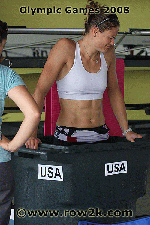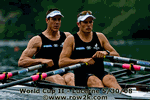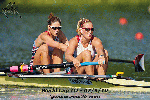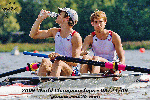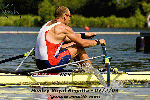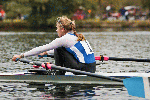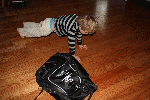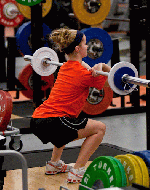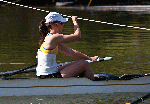Posture and Rowing
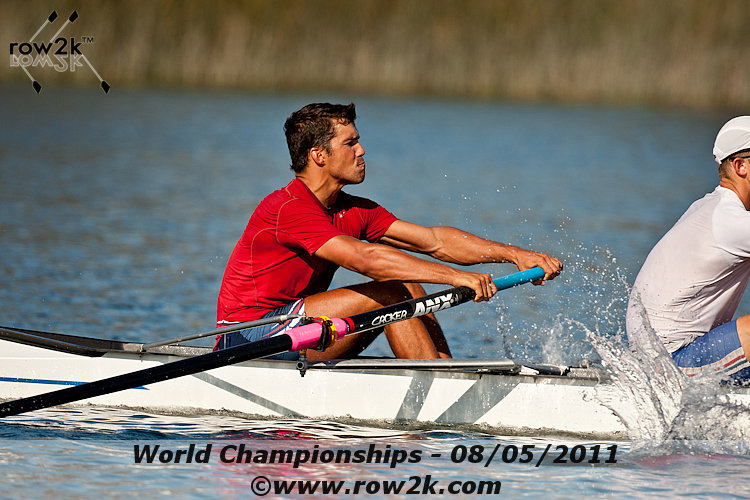
Posture is a culmination of life’s activities and tendencies. At the same time, our posture inevitably reflects our effort and commitment to improving it, or in some cases not. While ideal posture is different for each person, there are some key body alignment areas that are certain positions. For example when your back is against a wall your ears should be directly over the shoulder joint and your head should be touching the wall with your chin parallel to the ground. Infants and toddlers start out with a clean slate, and have an ideal body alignment from the get-go. They are flexible and strong at the same time. Like a world-class Olympic lifter, they can easily get into positions that many would cringe at. Barring any genetic or birth defect, the fact is that most of us could still easily get into these ideal positions if we had perfect posture. So what happened? Life, gravity, and normal daily activities. They slowly undermine our clean-slate posture. Fortunately, one thing I have learned through my years of practice is that we are capable of restoring much of the flexibility and strength we once had through hard, consistent work and a solid well-balanced plan.
Gravity creates a constant pull on the body when we are standing, sitting, or rowing in a boat. Years of postural neglect lead to the development of poor postural habits, and the inability to maintain good posture for more than a few moments. Poor standing posture only gets worse when you get in a boat. When we stand, our hips are free to move forward and back as we do in daily activities. However, in a boat, we lose this ability and the hips shift the force to other areas of the body, namely the trunk and lower extremities. Keeping the spine in a good upright position then becomes difficult and tiring, especially when you have flexibility and strength limitations. A common rowing posture is what I call the “turtle shell”, or “rounded” position, where the spine (low and mid-back) are flexed or rounded. This spine position places increased stress on the passive tissues of the spine and ribs (discs, ligament, and bone). While the spine is amazingly resilient, prolonged periods of rowing at high intensity and volumes ultimately lead to back and rib injuries.
To improve posture, flexibility is always the priority and must be addressed first. I like to say “if you can’t get there, you can’t strengthen it”. Having excellent range of motion helps athletes get into ideal sporting positions. In rowing, two critical areas for flexibility are in the hamstrings and the latissimus muscles. Tightness in either area or both leads to the likelihood of rowing in the rounded back position. The drive of the rowing stroke is essentially a horizontal Olympic power clean. I use this movement as my model for flexibility, strength, and spine position, to help rowers develop maximum power with least chance for injury. The only difference between the rowing stroke and Olympic power clean (aside from horizontal vs. vertical) is that in rowing our hips are not free to move (seat). This fact alone (hips fixed by the seat) leads to a greater need of flexibility, and is also the reason why we can’t get the spine into a fully extended (curved or lordotic) position during a rowing stroke.
Strength is also an important consideration for maintaining better rowing posture. Without a conscious effort to maintain good posture in the boat, most rowers slump down into the rounded position. This position is easiest to maintain because it requires little to no energy to maintain it. As flexibility improves, it becomes easier to strengthen the spine into an extended position. Strengthening the spine against gravity (in standing) is an excellent way to help promote a more extended or straight position of the trunk/spine in the boat.
Making the shift to better posture requires considerable work and effort, but becomes habit over time. Sitting upright then becomes second-nature. There are two very effective exercises that can be used for both improving flexibility and strength, and target the hamstrings, lats and spine. The first is the straight leg dead lift which targets the hamstrings, glutes and back extensor muscles. This exercise can be used to stretch the hamstrings using a dowel or stick, or as an exercise to improve strength in the hamstrings, glutes and back extensor muscles by using a barbell or dumbbells. The other exercise is the overhead squat which is a great way to stretch out the lats. If weight is added (barbell), this exercise increases strength in the low back, quads, glutes, hamstrings, trunk and other muscles. Proper coaching instruction will help maximize the results from these two lifting techniques. Both exercises can be used as either a stretching or strengthening exercise to improve your posture both on land and in the boat.
Ideal posture will not only translate into more effective, efficient and powerful rowing, but will also extend into all your day-to-day activities of our lives outside the boat. So sit-up, stand-tall, and make a conscious and balanced effort to improving your posture.
If you enjoy and rely on row2k, we need your help to be able to keep doing all this. Though row2k sometimes looks like a big, outside-funded operation, it mainly runs on enthusiasm and grit. Help us keep it coming, thank you! Learn more.
- Bont Rowing
- Calm Waters Rowing
- Concept 2
- Craftsbury Sculling
- The Crew Classic
- CrewLAB
- Croker
- Durham Boat Co.
- Empacher
- Faster Masters
- Filippi
- Fluidesign
- h2row.net
- HUDSON
- Live2Row Studios
- Nielsen-Kellerman
- Oak Ridge RA
- Peinert Boat Works
- Pocock Racing Shells
- Race1 USA
- RowKraft
- Rubini Jewelers
- Vespoli USA
- WinTech Racing
- Bont Rowing
- Calm Waters Rowing
- Concept 2
- Craftsbury Sculling
- The Crew Classic
- CrewLAB
- Croker
- Durham Boat Co.
- Empacher
- Faster Masters
- Filippi
- Fluidesign
- h2row.net
- HUDSON
- Live2Row Studios
- Nielsen-Kellerman
- Oak Ridge RA
- Peinert Boat Works
- Pocock Racing Shells
- Race1 USA
- RowKraft
- Rubini Jewelers
- Vespoli USA
- WinTech Racing



